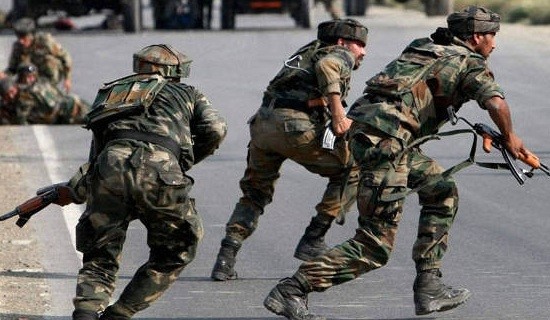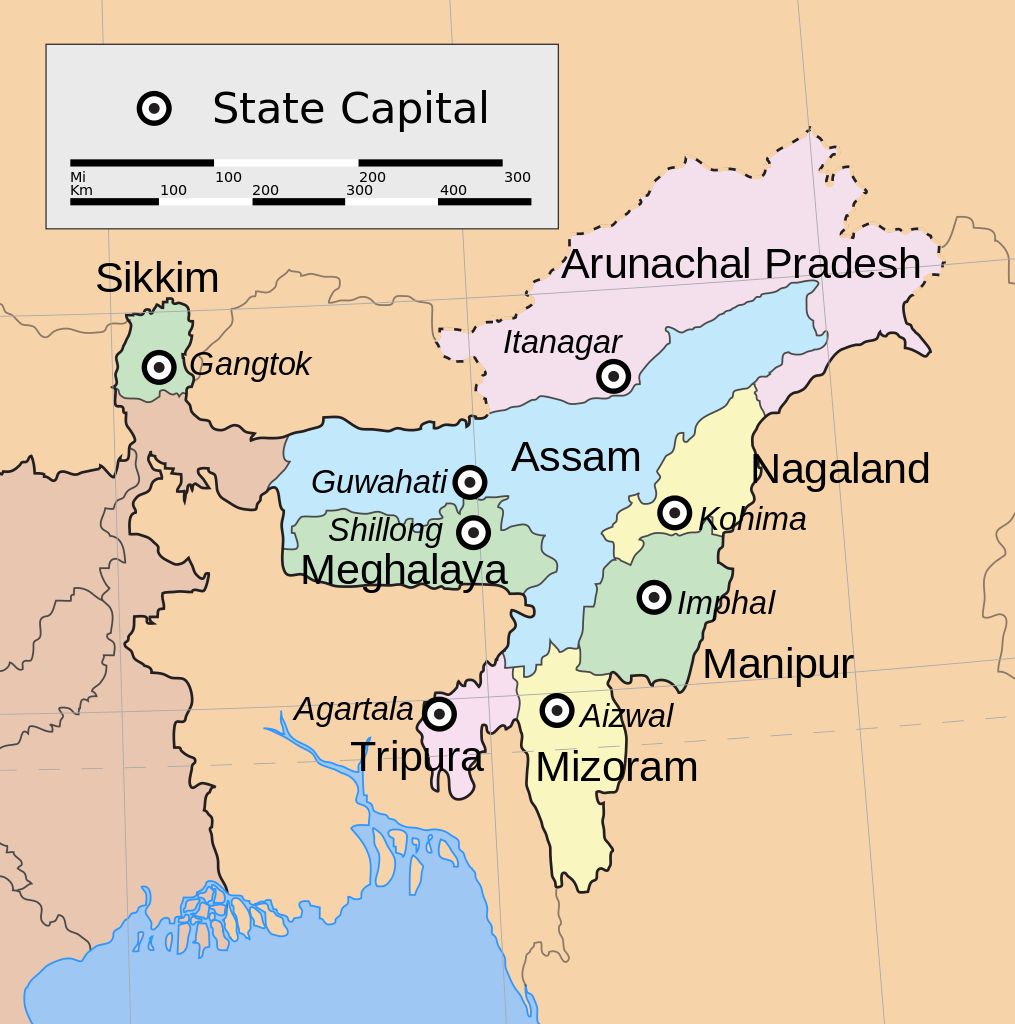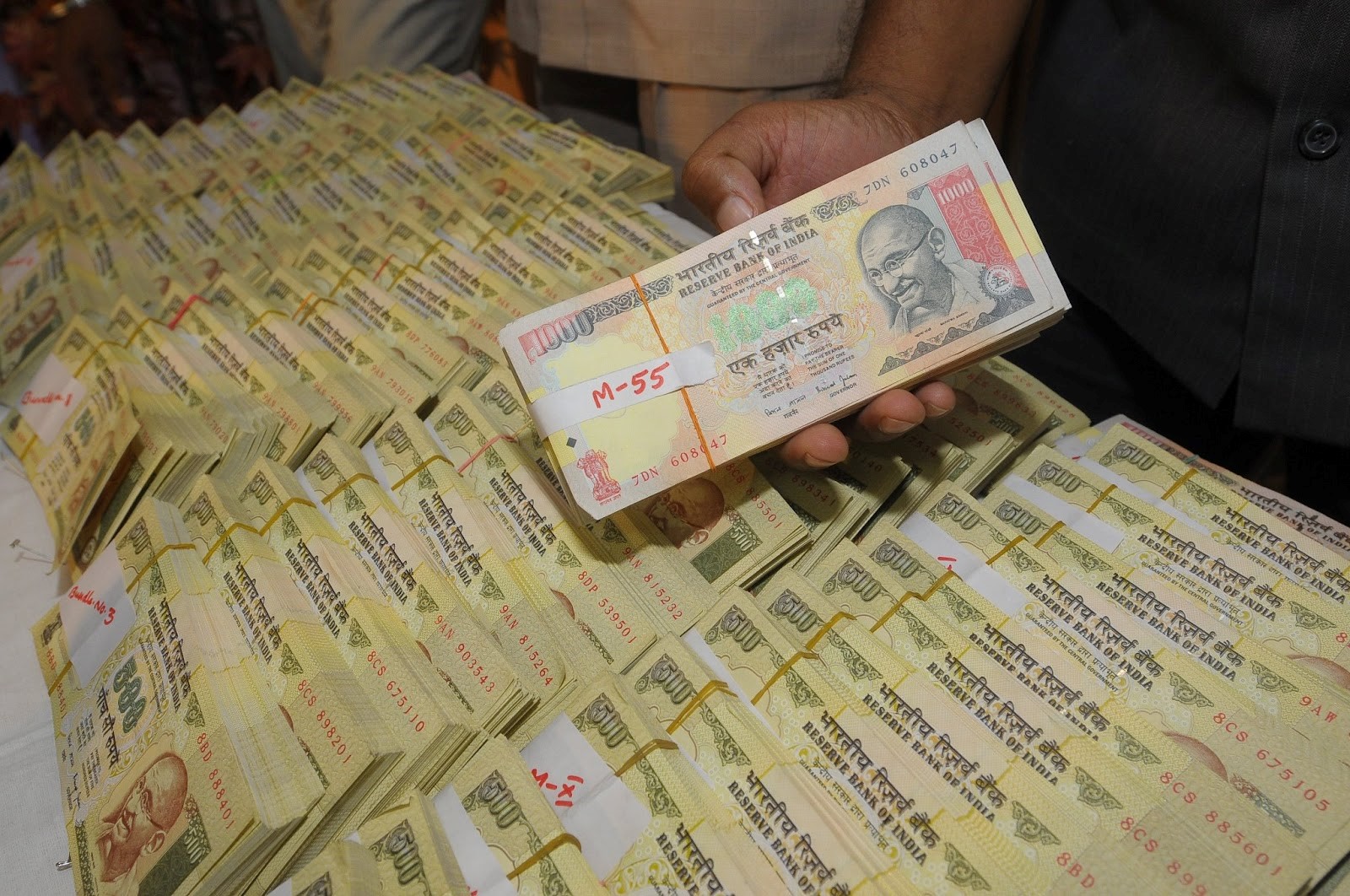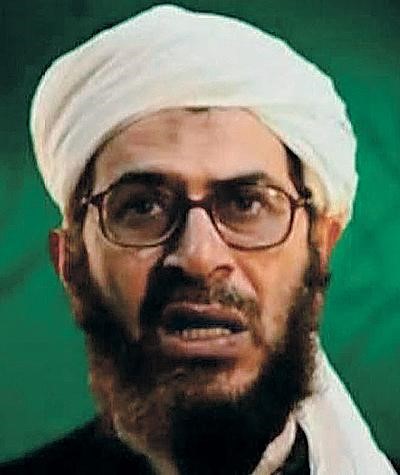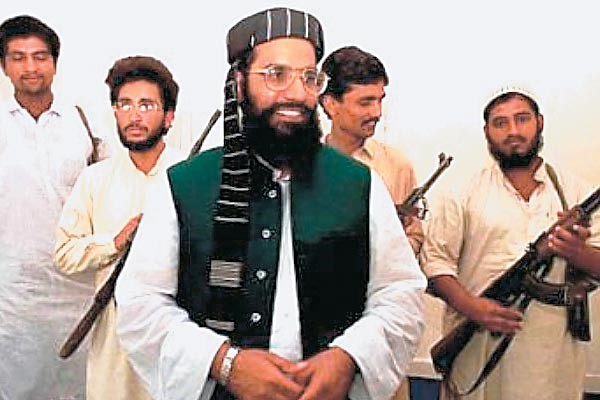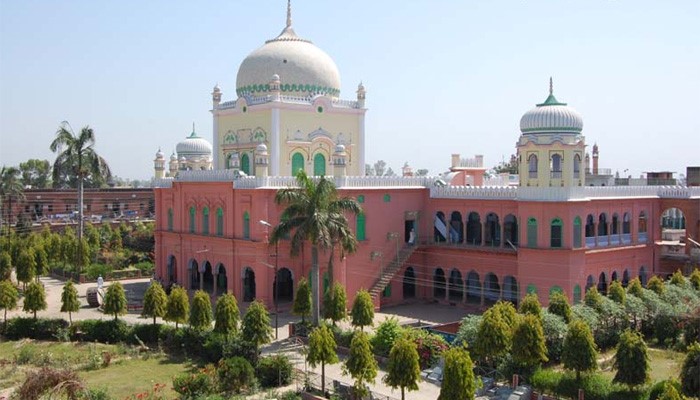Dr. Farhan Zahid
Special Contribution to the AIS Website, October 1, 2014
The rise of the Islamic State (former ISIS) and its establishment of a self-proclaimed Caliphate) not only shocked terrorism and security analysts but also the Islamic State’s parent organization – al-Qaeda. Dr. Ayman al- Zawahiri, the current Amir of al-Qaeda, must have serious concerns about the arrival of a new competitor in the arena of global jihad, once considered synonymous with al-Qaeda. There is no doubt that with experience, global reach, affiliated groups and associated movements in more than 60 countries, al-Qaeda is going to be in the jihadi business for a long time, whereas the Islamic State may not survive long. Whatever the course of events, al- Zawahiri is currently in a fix. Thousands of al-Qaeda sympathizers across the globe have expectations that their Amir will compete with the so-called Islamic State with new strategies and tactics. Al-Zawahiri would obviously not like to be seen as meek. It appears that in this dog-eat-dog situation, al-Zawahiri is set to compete with the Islamic State to preserve al-Qaeda’s status in the world of jihad.
The establishment of al-Qaeda in the Indian Subcontinent (AQIS) is one such step in this regard. Though al-Qaeda already has two associated groups in India and six in Pakistan, it seems that al-Zawahiri intends to reinvigorate the current set up. The al-Qaeda associated groups in the region are:
India
1. Student Islamic Movement of India (SIMI)
2. Indian Mujahideen (IM)
Pakistan
1. Harkat ul-Jihad-e-Islami(HuJI)
2. Harkat ul-Mujahideen (HuM)
3. Lashkar-e-Taiba (LeT)
4. Jaysh-e-Mohammad (JeM)
5. Lashkar-e-Jhangvi (LeJ)
6. Tehrik-e-Taliban Pakistan (TTP)
Al-Zawahiri selected Maulana Asim Umar as the Amir of AQIS. Umar is a known jihadi ideologue and propagandist as well as an active figure amongst jihadi forces in Pakistan. His selection by al- Zawahiri from the available lot of senior jihadi is by no means a coincidence. Umar has worked with almost all jihadi organizations of Pakistan and he may help al-Qaeda Core to strengthen ties and possibly merge with these organizations. The immense number of jihadis in Pakistan and the number of attacks over the last 12 years prove the point that Pakistan’s huge youth bulge may provide a pool of new recruits to al-Qaeda. Umar’s connections with Pakistani sectarian outfits and Islamist Kashmiri jihadi organizations would be an asset for al-Qaeda’s expansion in Pakistan and India.
According to unconfirmed sources, Umar hails from the southern Pakistani metropolis of Karachi, a city distinguished by its relatively secular and modern atmosphere in comparison with other Pakistani urban centers.
Umar studied at the Jamia Uloom-ul-Islamia madrassa in Karachi, a seminary notorious for producing jihadis. Mufti Nizam Uddin Shamzai, the slain former principal of the seminary, had been a staunch supporter and mentor of the Afghan Taliban regime. Shamzai also patronized Pakistani jihadi organizations Harkat ul-Jihad-e-Islami (HuJI), Hakat-ul-Mujahideen (HuM), Jaysh-e-Mohammad (JeM), and sectarian jihadi organizations like Sipha-e-Sahaba (SeS) and Lashkar-e-Jhangvi (LeJ) (Express Tribune [ Karachi], February 12, 2011). Shamzai was shot dead in front of his own madrassa in May 2004 by unknown assailants.
Shamzai declared jihad against the United States and its allies in Afghanistan in 2001. Upon proclamation of his fatwa, thousands rushed to Afghanistan to fight alongside the Taliban and al-Qaeda during the U.S. invasion in October 2001. When the Pakistani military regime sided with the United States at the beginning of Global War on Terrorism (GWOT), Shamzai issued another fatwa, this time against the Pakistan Army (Daily Times [Lahore], May 31, 2004).
Shamzai’s two most prominent students were Qari Saifullah Akhter and Fazal ur-Rehman Khalil. After graduating from Shamzai’s madrassa in Karachi, Akhter and Khalil laid the foundations of Harkat ul-Jihad-e-Islami (HuJI), the oldest Pakistani Islamist terror group, in 1983. A few years later Khalil parted ways and established his own terrorist outfit, Harkat ul-Mujahideen (HuM) in 1987. In February 1998, HuM organized Osama bin Laden’s press conference in Khost, Afghanistan, where he proclaimed his fatwa against the U.S. and its allies and also announced the formation of the Islamic Front against Jews and Crusaders. [1]
Both terrorist groups remain involved in the Indian Kashmir insurgency. Masood Azahar, another of Shamzai’s students and a high-ranking member of HuM, founded Jaysh-e-Mohammad (JeM) after being released from an Indian jail in exchange for the release of Indian airline passengers hijacked by HuM militants in 1999. HuJI and HuM turned against the state of Pakistan as the military regime of General Pervez Musharraf decided to side with the United States. A HuM splinter group, HuM al-Alami, twice attempted to assassinate General Musharraf in 2002 in Karachi. [2]
Umar also studied at Darul Uloom Haqannia madrassa, located in the Khyber Pakhtunkhwa province of Pakistan. The seminar y has a reputation as a jihad factory because of its decades- old practice of sending students to Afghanistan to fight against Russian and later American forces. With more than 10,000 students, the madrassa is headed by Sami ul-Haq, leader of the Deobandist Jamiat-e-Ulea Islam political part.
More than 10,000 strong student body the madrassa is headed by Sami ul Haq, leader of Deobandi sect Islamist party Jamiat-e-Ulema Islam. Half of the Afghan Taliban cabinet considered Darul Uloom Haqannia as their alma mater. Mullah Omar, the supreme commander of the Afghan Taliban, reportedly studied at the madrassa. (Reuters Pakistan, September 9, 2014)
Works of Asim Umar
Umar, the newly appointed Amir of AQIS, has written a number of conspiracy theory books. Umar writes in Urdu, the national language of Pakistan. His favorite topic is Dajjal (the Islamic equivalent of the Anti-Christ). Despite being part of Pakistan’s jihadist network, Umar focuses on cosmic and Manichean issues like second coming of the Nabi Issa (the Prophet Jesus), the appearance of the Mahdi, Armageddon, and Dajjal. Umar connects these upcoming scenarios with current events like the U.S. invasion of Afghanistan, the activities of private security contractor Blackwater/Xe (known since 2011 as Academie) and the Bermuda Triangle.
Dajjal Ka Lashkar: Black Water (Army of Anti-Christ: the Black Water)
Umar describes events related to private security company Blackwater/Xe activities in Pakistan, and narrates some of his own experiences. In Umar’s view, the employment of Blackwater/Xe in Pakistan and their growing influence at the behest of Pakistani apostate rulers, is part of a Christian-Jewish conspiracy against Pakistan, much bigger than anyone could imagine. Umar considers Blackwater/Xe an organization of religious fanatics spying in Pakistan. Blackwater/Xe, according to Umar, is working to steal Pakistan’s nuclear assets and is part of a wider plan for setting appropriate conditions for the arrival of Dajjal. In this view, Black Water has managed to create an economic crisis in Pakistan while recruiting thousands of apostate Pakistanis and trying hard to push the Pakistani government to provide them with bases and air strips in Pakistani territory. In the last chapter of this work, Umar lists U.S. military bases in the Indian Ocean and the Middle East. [3]
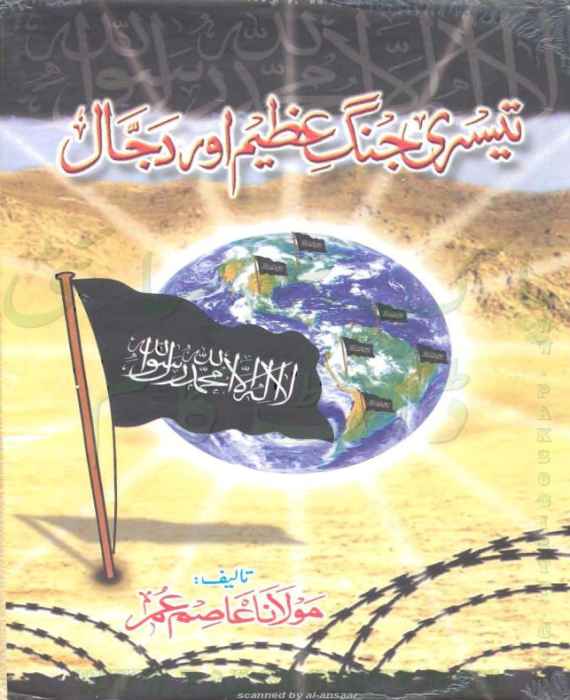 Teesri Jang -e- Azeem Aur Dajjal (World War III and Dajjal)
Teesri Jang -e- Azeem Aur Dajjal (World War III and Dajjal)
Umar links the impending outbreak of the Third World War with the arrival of Dajjal while describing signs and events before the Battle of Armageddon. Umar identifies a long list of events from wars in Bosnia, Chechnya, Pakistan, India, Syria, Iraq and even relates the roles of the IMF, World Bank, international media , private firms like Blackwater/Xe and multinationals like Nestle to a “Western plan” to depopulate Muslim countries by launching population control campaigns. [4]
Imam Mehdi ke Doost aur Dushman (Friends and Foes of the Mahdi [Messiah])
In this work, Umar links various different conspiracies to the role of Shi’a clergy and the collusion of various different Shi’a sects (such as the Ismailis, Alawis, etc.). Another important sign, according to Umar, is the emancipation of women. Umar claims families such as the Rockefellers, Bushes and the family of the Agha Khan have been hatching conspiracies against the Imam (Messiah). In a tacit manner, Umar cites the Yemeni people and, indirectly, Osama bin Laden, in upholding the truth and acting as friends of the Imam. Umar dedicates the book to Ghazi Abdur Rasheed, leader of the radical Islamists killed during the Red Mosque Operation (Operation Silence) in Islamabad in July 2007. [5]
 Bermuda Tikon aur Dajjal (Bermuda Triangle and Dajjal)
Bermuda Tikon aur Dajjal (Bermuda Triangle and Dajjal)
Umar describes the Bermuda Triangle and alleged disappearances of vessels in detail. He narrates eye-witness accounts and then elucidates the links between extraterrestrials and Dajjal with the involvement of the U.S. government, NASA, Pentagon and American scientists. Umar then explores his favorite conspiracy theory, one suggesting the Shi’a, the U.S. government, the European Union, apostate Muslim regimes, Blackwater/Xe, the World Health Organization, UNICEF and others are working together to side with Dajjal in the end days. Umar dedicated this book to the prisoners at Guantanamo Bay. [6]
Association with Pakistani Islamist Terrorist Groups
Before becoming the Amir of AQIS, Umar has tagged along with Jihadi organizations in Pakistan in various capacities. He served as propagandist of Harkat al Jihad-e-Islami (HuJI) and Harkat ul Mujahideen (HuM). Umar was also close to Sipah-e-Sahaba and Lashkar-e-Jhangvi, and has written openly against “Shi’a designs” in Pakistan in his books. The moment when Umar became associated with al-Qaeda is not known, but it is assumed that the relationship developed in Taliban-ruled Afghanistan where al-Qaeda was running training camps and graduating thousands of HuJI and HuM militants every year from 1996 to 2001. The relationship strengthened after hundreds of militants escaped the Red Mosque Operation and joined hands with al-Qaeda in tribal areas. [7]
Umar has a long association with al-Qaeda Core in tribal areas of Pakistan under the protection of the Tehrik-e-Taliban Pakistan (TTP). Because of his jihadi credentials he was earlier selected by al-Zawahiri to head al-Qaeda’ss Shari’a committee in Pakistan (NDTV [New Delhi], September 4, 2014). After taking charge of AQIS, Umar has reaffirmed his stance by declaring the United States his prime enemy. In his message to Indian youth he asked: “Why is it that the Muslims of India are totally absent from the fields of jihad? Rise! Awaken! Participate in this global jihad to give a final push to the collapsing edifice of America” (Hindustan Times, September 4, 2014)
As a result of his long jihadi career in Afghanistan, Kashmir and Pakistan, Umar speaks fluent Arabic, Urdu, Uzbek and Pashto. While working for the overwhelmingly Pashtun TTP, Umar translated jihadi material from Pashto to Urdu. Because of his Islamic clerical education, Umar is well versed in Islamic issues. He is a good orator as well as an effective propagandist. However, little is known about his jihadi credentials as far as field operations are concerned. According to one source, Umar is more of an ideologue than actual fighter. [8]
Umar’s current focus is on jihadi activities in Indian Kashmir, Assam, Myanmar and Pakistan. He has capitalized on the available pool of jihadis in Pakistan to raise a new cluster from regions experiencing jihadi turbulence. Umar has denounced taking refu
“Those (Kashmiris) who swore to martyrs to walk their path till their last breath and vowed to continue jihad; who convinced them to shun jihad and dream about [obtaining the] freedom of Kashmir by resorting to protests, shutdowns and democratic ways?… Caravans are heading from Afghanistan to liberate India and it is not being done on instructions of any intelligence agency, and not as part of some governmental policy, but simply to abide God’s command…” [9]
Conclusion
Al-Qaeda Amir Ayman al- Zawahiri is ready to compete with the Islamic State. In a country like Pakistan where a range of jihadis is available, hoping to recruit and revive many of the dormant jihadi groups under the banner of AQIS. Elevating Asim Umar to Amir of AQIS is a tactical move; Umar’s experience of working with jihadi organizations will enable him to widen the al-Qaeda network in Pakistan and India.
Notes
1. HuMA, South Asia Terrorism Portal, http://www.satp.org/satporgtp/countries/Pakistan/terroristoutfits/HuMA.htm)
2. (HuMA, South Asia Terrorism Portal, http://www.satp.org/satporgtp/countries/Pakistan/terroristoutfits/HuMA.htm)
3. Asim Umar, Dajjal Ka Lashkar: Black Water, Jamia Hafsa Urdu Forum, Islamabad, 2009.
4. Asim Umar, Teesri Jang -e- Azeem Aur Dajjal , Al-Ghazi Welfare Trust, Bagh, Azad Kashmir, October 2006.
5. Asim Umar, Imam Mehdi ke Doost aur Dushman, Al-Hajira Publications, Karachi, May 2009.
6. Asim Umar, Bermuda Tikon aur Dajjal, Al-Hajira Publications, Karachi, 2009.
7. Interview with a local journalist in Islamabad who requested anonymity, September 10, 2014.
8. Ibid
9. As-Sahab Media video: War Should Continue, Message to Muslims of Kashmir, Shamikh, June 16, 2014.
The Author
Farhan Zahid earned his Ph.D. in Counter Terrorism Studies from the University of Brussels, Belgium. Dr. Zahid has authored more than 20 research papers and articles. He writes on counter-terrorism, al-Qaeda, Pakistani al- Qaeda-linked groups, Islamist violent non-state actors in Pakistan, jihadi Ideologies and the Afghan Taliban.
The preceding is a guest contribution to Aberfoyle International Security (AIS) and does not necessarily reflect the views or opinions of AIS.

